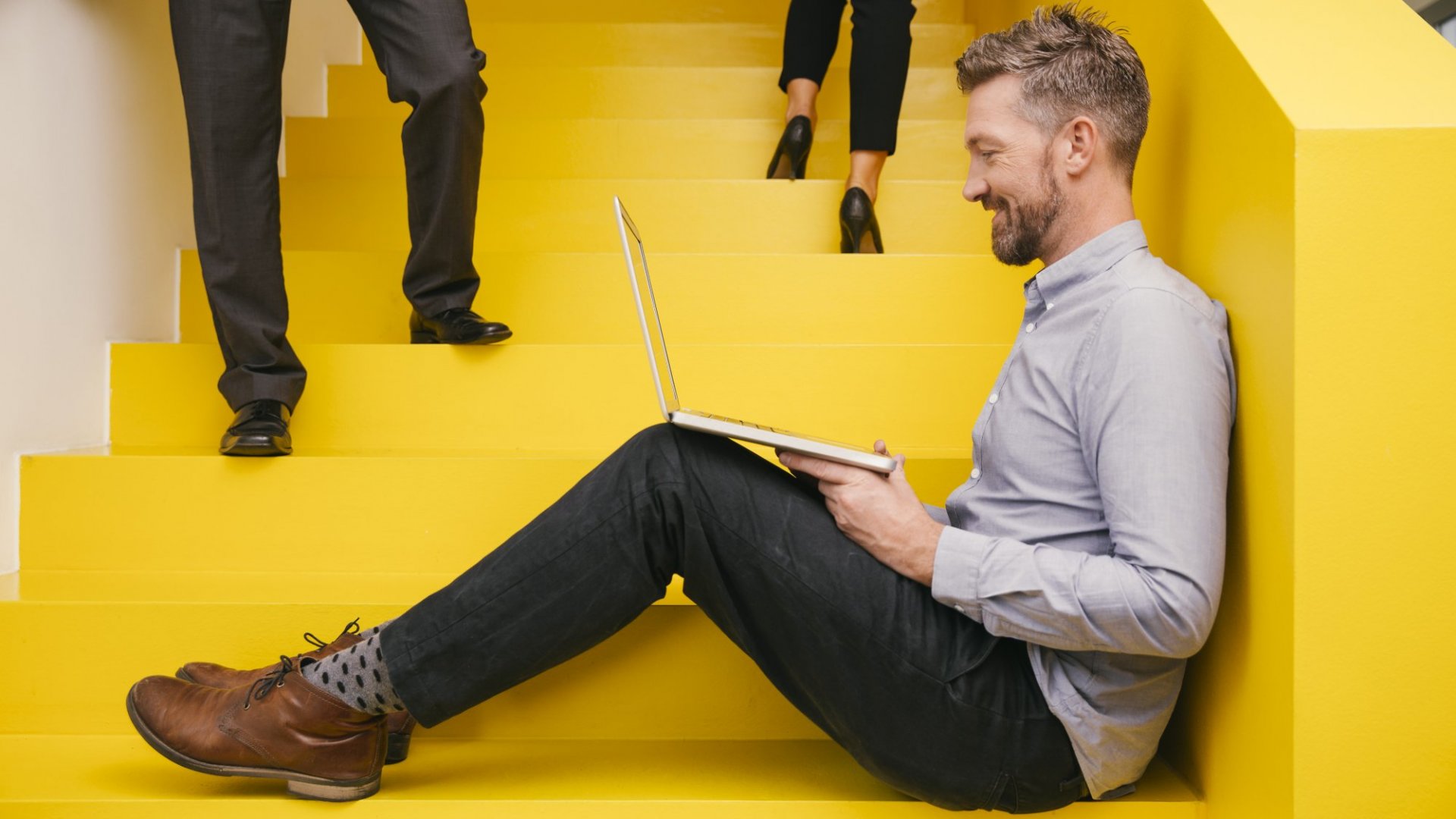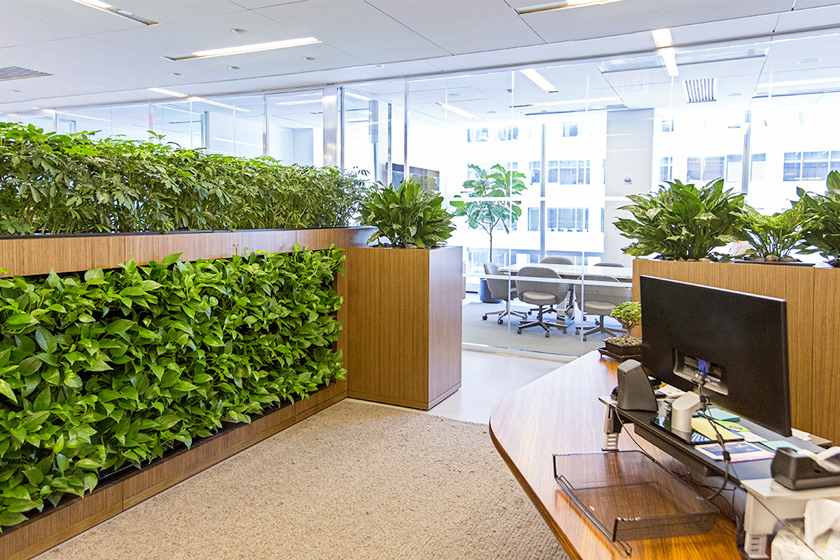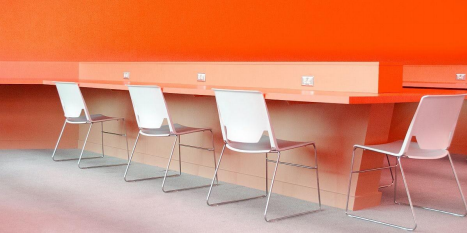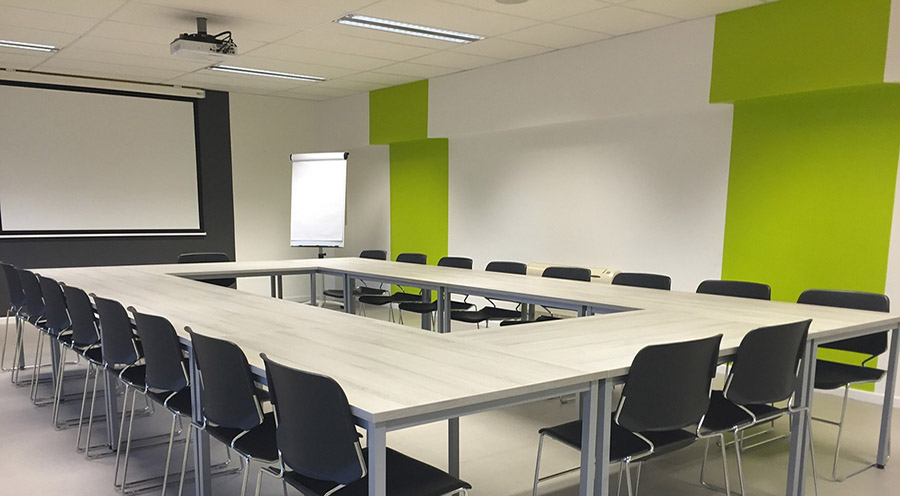Color Meanings in the Office
Some people may think it is crazy when they hear about the practice of Feng Shui or other exercises that help with the “mood” in a room. However, many people claim to feel better and more productive when they have a certain sense of peace and calm around them. But did you know “Color Psychology” is a real thing that more offices should look into and consider? Have you ever thought about a color impacting your business sales, productivity, and your employee’s happiness? Believe it or not, it can, and it will if you do not do something about the atmosphere in your office. There are many inexpensive ways to liven up the office while still keeping costs down using color meanings. Today we will take a deeper dive into the increasingly popular topic of “Color Psychology” in the workplace.
What is “Color Psychology?”
Color is the way our brains process and respond to colors they see which subconsciously emits a feeling or emotion when we see that color. There are five principles of color psychology:
- Each individual color can give off a different feeling and specific meaning. People often refer to colors as being “cool” or soothing verses “hot” or warm.
- Did you know the way an individual reacts to color can either be learned or something we are born without knowing we are doing it?
- When you have an awareness of color it causes you to evaluate your surroundings, which in turn leads to color-motivated behavior.
- People have an immediate connection to certain colors, and it can influence a person automatically.
- How colors are perceived depend on a number of factors like context, age, race, culture and life experiences.
Office Design – Where Color and Function Collide
Just because one color helps one person with their productivity does not mean that color will suit everyone. Interior designers have a number of factors to consider when planning a new office and suggesting various colors schemes. One idea to get the most universal productivity from your employees is to select the same color desk base and then let each person choose the desktop color that they think will work best for them. The type of work each person does also is a contributing factor when designing an office space. A creative person in the marketing department might want yellow which often evokes innovation and energy. However, an accountant may prefer blue because this color is known for its ability to sooth the mind and encourages clear thought.
Aside from choosing several colors to appeal to a variety of job types, office decorators must also think about company culture, lighting, texture, artwork, and furniture when planning a harmonious work environment. You may love having your wall painted chartreuse next to your desk, but for your coworker that color may evoke a feeling of disgust and be too cheery for her. How do you work in a middle ground? The color of walls in an office is not as “black and white” as it may seem. Oftentimes it helps to have a more neutral color on a big wall. But you can still have a piece of artwork with some chartreuse or an accent pillow on a couch. Injecting colors in a room can happen through the use of graphics, artwork, and plant “living walls.”
What Colors Mean and Where to Use Them?
As with anything in human nature, people have varying theories on which colors fit best in the office and what feeling the color evokes. Here are some general guidelines for colors to consider in your office to promote focus and productivity.

THE BLUES
Best industries to use blue: Accounting, Doctor’s offices, Spas, and Bathrooms
Pros: Gives a workspace a professional and intelligent look
Cons: Certain shades of blue can feel a little dull or depressing which is certainly NOT something you want when you are trying to be productive.
Design: The best colors to pair with blue are neutrals like white with orange accents. Blue also opens up a space and is a good color to make a small office feel larger.
Light blue is an all-around favorite for industries like accounting where an employee works with repetitive tasks. This intellectual color calms the mind, allowing for a clearer thought process. Light blue is also known for reducing mental strain. Being the color of the sky, light blue tends to have a calming effect which also gives off a feeling of being refreshed to take on new challenges of the day.
What does science say about the color blue? Blue emits a feeling of hope, decreases blood pressure and helps to reduce heart rates. You may have heard you should not use your phone when you are trying to sleep because it emits a blue light. Did you know the human brain uses light as an indicator of what time of day it is? This blue light, around a 17,000 color temperature, helps make people feel like they have more energy. This hue of blue light suppresses the body’s natural production of the hormone melatonin. The production of this hormone helps to regulate your circadian rhythm which in turn determines when you naturally go to bed and wake in the morning. Therefore, light is used as a barometer of sorts for how energetic or laid back we should be throughout the day. So subconsciously this might affect an employee’s motivation level!

RED
Best industries to use red: Any type of food service, restaurants because it is associated with appetite because the color stimulates the senses.
Pros: When a worker is around the color red, it tends to give them a feeling of passion for their work and excitement and energy towards their company. Red also is said to represent strength.
Cons: Since red is also a universal sign of danger, it can also represent aggressiveness and anger, along with being quick-tempered. Red can sometimes also cause people to feel anxiety and tiredness. None of these characteristics are good for business.
Design: In the office, red is best used as an accent color because it can be too bright and domineering. Too much red can overwhelm some employees. There are a number of directions red accents can go in an office including a Rustic, Contemporary, or Minimal look. The best accent colors for red are black, white, turquoise, greens, and blues.
Overall, red is considered to be a warm, positive, and physical color that draws attention to itself. This color definitely will get people’s juices flowing when they are sleepy. Red is also a stimulant for conversation and collaboration as it tends to bring people together. Have you ever considered which office color stimulates conversation and collaboration? Red! It is also known as a color that makes great first impressions with new clients for instance.
What is the science behind the color Red? This color has been known to increase a room’s energy level because of its ability to raise blood pressure and speed up reaction times and hence one’s heart rate. So, if your company requires you to be consistently mentally alert or physically active, then this is definitely the right color for your office!

YELLOW
Best industries to use yellow: Children’s products, Leisure products, Fun and Entertainment businesses, Writers, Designers, Fast Food too because it is known to keep people moving.
Pros: Yellow encourages employees to do the best at their job, provides a sense of optimism and creativity
Cons: Some people think yellow is NOT a soothing color and therefore is not good for industries that are deadline driven. Too much yellow can make some people feel anxious, nervous, and apprehensive.
Design: Always be cognizant of what shade yellow you use. You do not want people blinded like they are looking at the sun all the time. But it would keep you awake! And mustard yellow can have a dirty, negative feeling to some office workers. This is also a color that is best used as a “pop of color” like red in the office.
Yellow is often known as the “memory color” because it tends to increase people’s attention levels. Accents of yellow around the office can help workers retain information better, encourage innovation and creativity on the job. Some companies feel yellow increases a worker’s productivity tenfold.
Physically, yellow stimulates the logical side of the brain and provides for better mental clarity. It also helps people who do a lot of analysis in their work, because yellow helps with reasoning and decision-making.

GREEN
Best industries to use green: Specifically dark green for Financial offices and any other industries involving money. Medical office, especially chiropractors and other types of medicine that deal with healing and overall health. Organic and environmentally friendly products.
Pros: Improves focus and efficiency. Lessens eye fatigue. Restfulness helps to calm nerves and stress. Well-being and balance. Feels more open space because it reminds them of nature and is calming.
Cons: Difficult to concentrate. Can cause distraction and feelings of being overwhelmed when too bright. Too much dark green can give off feelings of envy, greed, and selfishness which go hand in hand with money.
Design: “Living walls” are a trend at the moment because they bring nature outside inside the office. Aside from live plants, you can use green in paintings or landscape photographs to add to this earthly feeling.
Green is a color of growth and vitality which is often associated with new life and renewal. Therefore, many people associate green with nature. Also, green creates a feeling of compassion towards others and promotes generosity, kindness, and sympathy. One of the office trends at the moment besides gray, is green actually because it is environmentally friendly, natural, and laid back looking but still structured.
Psychologically, green helps to balance people’s emotions and helps to give them a sense of calm. The color green helps balance the mind, the body as well as emotions. A great characteristic of green in business is that it is said to help in decision making by the ability to see all sides clearly.

ORANGE
Best industries to use orange: Gyms and other fitness businesses, Sports teams, Hotels and Resorts, Kids Toys
Pros: Excitement, enthusiasm, and energy
Cons: According to one poll, orange is the most disliked color in the Western World
Design: Best used in a simple, quiet way like on accent pillows, a cute desk accessory or even post- it notes. Walls can be painted a pale orange, terracotta, or peach. Office lounges, however, can be painted with bright orange since it encourages socialization and discussions.
Orange is a color that evokes warmth, happiness, optimism, and fun all at the same time.
This color, while it can catch your eye, it also is calming at the same time. Orange can help cheer you up in difficult times. Psychologically, the color orange is known for helping to lift people’s moods and renew their spirit. There are truly no downsides to the color orange in the workplace that I can find.

Neutral Color Meanings
Now that you know about how to best use these colors in your office, we are going to briefly discuss the neutrals. Neutrals are the best background color to round out your business atmosphere.
White has always been a mainstay of backgrounds both at the office and at home. This color can instantly help a space to look bigger and brighter and provides for a feeling of cleanliness and calm. But at the same time, you do not want to use so much white that your office looks like a medical lab! And it is often best to choose a tone of white that is not stark white but has a little hint of gray or tan in it.
Speaking of gray, why is this the new neutral in recent years? Well, gray is very neutral and serves as a good background for other colors because it doesn’t attract attention to it. Therefore, the other color[s] can stand out. Gray can also be considered a reserved color in business because it lacks energy. But if you use a light gray it can actually be uplifting when against bright colors. Make sure not to use a dark gray too much because it can be depressing and dull. Gray is best known for giving off a feeling of reliability, simplicity, and security which are always good for business.
Now that you have been given a tour of the office rainbow of colors, which ones will you choose? Will you go bold with bright colors, soft neutrals, pops of color or in between. Whatever you decide, your employees will be more eager to come to work every day when they have a pleasant atmosphere to enjoy.
